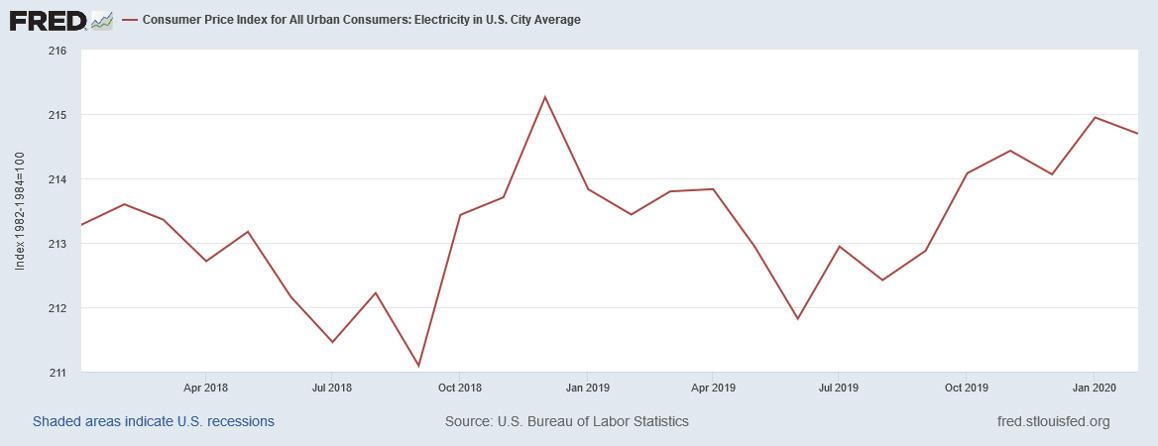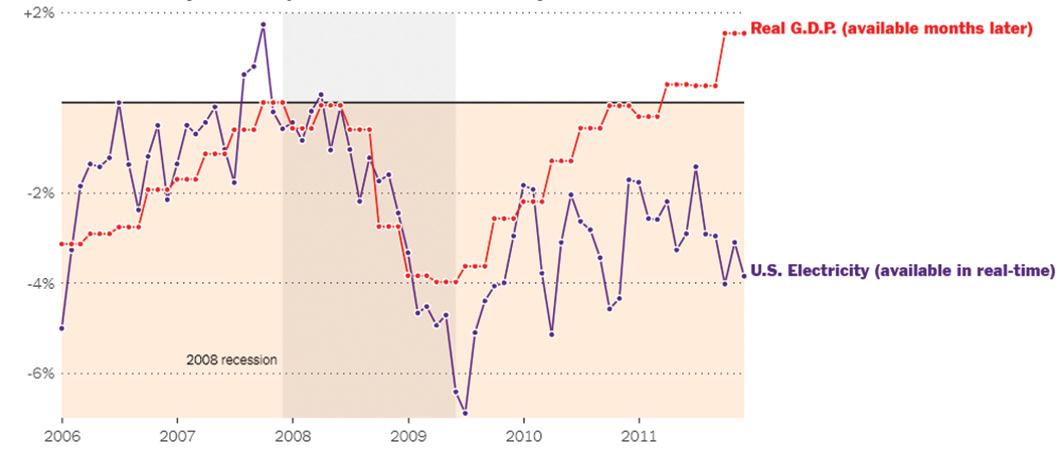
4 minute read
Consumer Price Index — Energy
By Zachary Westfahl
Connecticut continues to be the fifth highest price per kWh in the United States. From the fall Economic Activity Report to January of 2020, Connecticut has experienced a rate increase of 64 cents per kWh. This is not such a stark contrast to the U.S. average increase of 2.5 percent in residential rates over the same period. However, once January 2020 hit, both major energy providers in Connecticut, Eversource and United Illuminating, increased their rates, so consumers will be paying 19-24 percent more per month for electricity. It is yet to be determined whether the COVID-19 pandemic will alter the electricity rates for Connecticut.
Connecticut is pushing harder than ever to become “greener” in recent months. Legislators have begun work on setting goals even higher than Governor Ned Lamont had set. This “Green New Deal” for Connecticut requires emissions be lowered by 80 percent by 2050. An initiative that would traditionally be headed by the Energy and Technology Committee is being headed by the Labor and Public Employees Committee. Whether this will cause conflict is yet unforeseen, but the green goals are strongly backed by senators such as Julie Kushner, stating, “Everything we do affects all of the workers in Connecticut, and so moving to a green economy, a green deal is really critically important. Not just for those looking for future work but also for those working today” (Strong, 2020). The bill is quite comprehensive with a focus on education and spending in low-middle income areas and will establish an Environmental Equity Working Group to determine target areas for funding.
Figure 7
Table 3: Lowest Rates
STATE
NORTH DAKOTA LOUISIANA OKLAHOMA WASHINGTON MISSOURI
Table 4: Highest Rates
STATE
HAWAII RHODE ISLAND MASSACHUSETTS ALASKA CONNECTICUT
CENTS/KWH
9.01 9.05 9.06 9.43 9.52
CENTS/KWH
31.70 24.24 22.91 22.48 21.93
Figure 8

This pursuit of clean energy started before the COVID-19 pandemic, but its continuation remains ambiguous. Many are facing furloughs, and a struggling economy may not be able to take the cost burden required to turn green so soon without major economic impact. Senator Kushner herself said, “We can’t just put people out of work and expect our economy to move forward,” when addressing the “Green New Deal” initiative.
Zachary Westfahl ’20
Major: Behavioral Economics Hometown: Fond du Lac, WI
www.ctnewsjunkie.com/archives/story/20200304_connecticut_offers_its_own_version_of_a_green_new_deal/#more https://fred.stlouisfed.org/ www.chooseenergy.com/electricity-rates-by-state/
By Zachary Westfahl
There is no doubt the current public health COVID-19 crisis has led to an economic crisis. The extent of this crisis, its depth and breadth, is yet to be determined. Economists are examining various key performance indices to assess the situation and formulate policy recommendations to address the then-current state of economic affairs.
Recently, it has become more common to use electricity consumption as a measure of economic performance because electricity use data is generated sooner than other economic indicators such as Gross Domestic Product (GDP). 1 Specifically, Steve Cicala, an economist at the University of Chicago, found that measures of electricity consumption more accurately identified the fall and rise of economic activity before GDP reported the same. Now, electricity consumption is being used to predict a recession because of the COVID-19 pandemic.
To understand the current economic environment, we compare the COVID-19 pandemic recession to the 2008 Great Recession. The root cause of each economic recession is different. The 2008 Great Recession was caused by a bank lending crisis and an overissuance of sub-prime home mortgages. The current economic downturn results from a direct order from state and local governments to shut down economic activity for the protection of public health. In each instance, individuals were unable to pay day-to-day bills. Even with government programs providing relief, we could see many defaults on mortgage payments the same as we did in 2008. While this may seem like a necessary evil to protect lives, a housing market collapse will leave a resounding effect on the economy long after we stop incessantly using hand sanitizer.
Our awareness level of economic downturns are different. In 2008, the United States was caught off-guard by a bank failure; our recognition came far too late. Today, in 2020, we are acutely aware that the economy is being affected, and we are already taking steps to offset the downturn. Both government and private business are doing their part to stave off real catastrophe. The CARES Act of 2020 and charitable donations are already being implemented.
Figure 9: U.S. electricity demand by region 1/14/2020 – 4/12/2020, Eastern Time

Figure 10: How electricity data compared with economic activity in 2008

This pandemic is a different beastfrom the ones we have encountered before. Even recession-proof industries like fast food and alcohol are taking a hit because of government mandates regarding public health concerns. We have not just started excessively washing our hands, but rewritten our daily lifestyles to prevent the spread of the COVID-19 virus. In these atypical times, we can expect to see an atypical economy, but only time will tell just how different it will be.
1 Steve Cicala, an economist at the University of Chicago, performed economic research in 2012 and found that power outage data provided a quicker view of U.S. economic activity during the Great Recession than monthly unemployment released weeks or months later.
Source: https://www.nytimes.com/interactive/2020/04/08/upshot/electricity-usage-predict-coronavirus-recession.html
Zachary Westfahl ’20
Major: Behavioral Economics
Hometown: Fond du Lac, WI







